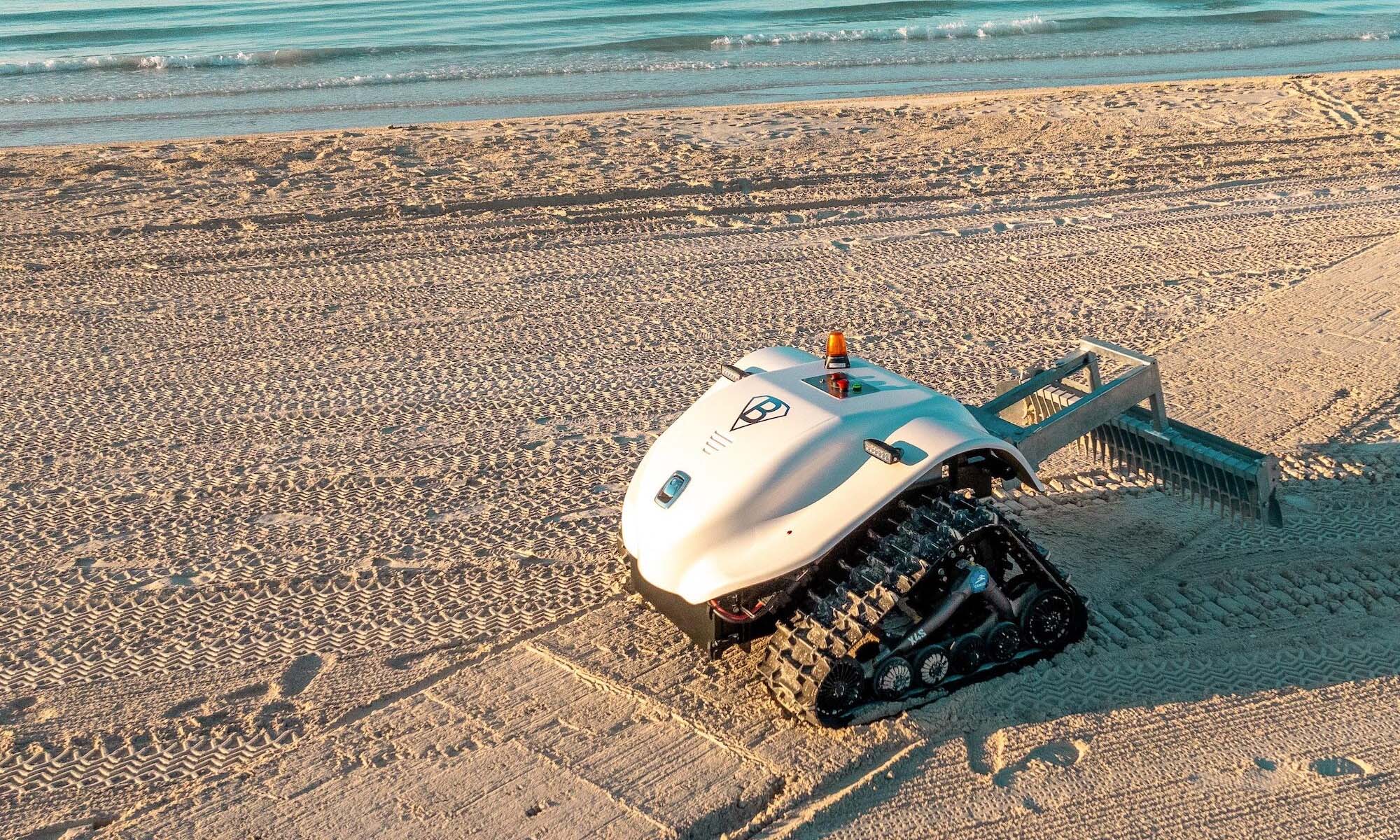News
New Saudi Beach Cleaning Robot Unveiled By Red Sea Global
The new machine will ensure the pristine shores of the Red Sea and Amaala destinations remain world-class destinations for luxury travel.

Red Sea Global, the developer behind The Red Sea and Amaala destinations in Saudi Arabia, has introduced an innovative robot to ensure the area’s stunning beaches remain free from waste and debris.
This cutting-edge electric robot has been designed to not only enhance the aesthetic appeal of the sandy shores but also to combat the persistent issue of plastic pollution and other forms of waste. One of its remarkable features is its ability to detect objects as small as a single cubic centimeter.
Introducing our beach-cleaning robot at @VisitRedSea – fully electric and remote-controlled. With the capability to clean 3,000 m2 in just one hour, it efficiently sifts and collects plastic waste and debris, identifying items as small as 1 cm2. pic.twitter.com/YMPCqiEOOG
— Red Sea Global (@RedSeaGlobal) January 26, 2024
The robot’s exceptional maneuverability enables it to navigate effortlessly around obstacles such as rocks and beach furniture. The machine also boasts an impressive 3,000 square meters of coverage within just one hour.
This newly introduced robot will commence operations at the Red Sea destination, playing a pivotal role in preserving the natural beauty of this world-class location and its exquisite resorts. This achievement underscores Red Sea Global’s dedication to safeguarding its beaches for visitors while also ensuring that the resort’s opulent travel experiences are in line with sustainable environmental practices.
Also Read: NEOM Unveils Zardun, A High-End Ecotourism Retreat
The Red Sea destination made its debut in 2023 with the opening of two luxury hotels. And since September, the Red Sea International Airport, the primary gateway to this extraordinary destination, has been receiving regular flights.
By the time of its completion in 2030, the Red Sea megaproject is set to feature an impressive array of 50 resorts, comprising a total of 8,000 hotel units and over 1,000 residential units spread across 22 islands and six mainland sites. Additionally, the destination will offer luxurious marinas, world-class golf courses, and an extensive range of entertainment and recreational facilities.
News
Google Releases Veo 2 AI Video Tool To MENA Users
The state-of-the-art video generation model is now available in Gemini, offering realistic AI-generated videos with better physics, motion, and detail.

Starting today, users of Gemini Advanced in the MENA region — and globally — can tap into Veo 2, Google’s next-generation video model.
Originally unveiled in 2024, Veo 2 has now been fully integrated into Gemini, supporting multiple languages including Arabic and English. The rollout now brings Google’s most advanced video AI directly into the hands of everyday users.
Veo 2 builds on the foundations of its predecessor with a more sophisticated understanding of the physical world. It’s designed to produce high-fidelity video content with cinematic detail, realistic motion, and greater visual consistency across a wide range of subjects and styles. Whether recreating natural landscapes, human interactions, or stylized environments, the model is capable of interpreting and translating written prompts into eight-second 720p videos that feel almost handcrafted.
Users can generate content directly through the Gemini platform — either via the web or mobile apps. The experience is pretty straightforward: users enter a text-based prompt, and Veo 2 returns a video in 16:9 landscape format, delivered as an MP4 file. These aren’t just generic clips — they can reflect creative, abstract, or highly specific scenarios, making the tool especially useful for content creators, marketers, or anyone experimenting with visual storytelling.
Also Read: Getting Started With Google Gemini: A Beginner’s Guide
To ensure transparency, each video is embedded with SynthID — a digital watermark developed by Google’s DeepMind. The watermark is invisible to the human eye but persists across editing, compression, and sharing. It identifies the video as AI-generated, addressing concerns around misinformation and media authenticity.
While Veo 2 is still in its early phases of public rollout, the technology is part of a broader push by Google to democratize advanced AI tools. With text-to-image, code generation, and now video creation integrated into Gemini, Google is positioning the platform as a full-spectrum creative assistant.
Access to Veo 2 starts today and will continue expanding in the coming weeks. Interested users can try it out at gemini.google.com or through the Gemini app on Android and iOS.





















